Introduction
As our furry friends age, their nutritional needs change significantly. Senior dogs often require special diets to maintain their health and vitality. Homemade dog food is a fantastic way to ensure your aging pet receives the nutrients they need while avoiding the mystery ingredients found in many commercial options. Did you know that about 60% of dogs over seven years old experience health issues related to diet? This statistic highlights the importance of tailored nutrition for our senior companions.
Homemade dog food allows you to control what goes into your pet’s bowl. You can select high-quality, fresh ingredients, steering clear of preservatives and fillers. This is especially crucial for senior dogs, who may have sensitivities to certain ingredients. With homemade meals, you can also address specific health concerns, such as joint issues, weight management, and digestive health. Your dog deserves the best, and creating meals from scratch is a loving way to show you care!
Speaking of fresh ingredients, why not consider adding some blueberries? These little powerhouses are not only delicious but packed with antioxidants that can help combat oxidative stress in aging dogs!
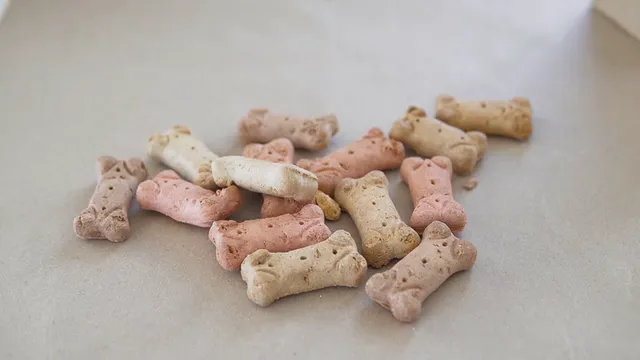
Why Choose Homemade Dog Food for Senior Dogs?
Benefits of Homemade Dog Food
Choosing homemade dog food for senior dogs comes with a plethora of advantages. First and foremost, you gain control over each ingredient. This means no more worrying about questionable fillers or preservatives that could harm your beloved pet. Instead, you can select fresh, nutritious ingredients that support their well-being.
Another significant benefit is increased digestibility. Senior dogs often struggle with digestion. Homemade food, crafted from whole ingredients, is easier on their stomachs and allows for better nutrient absorption. This can lead to a healthier coat, more energy, and improved overall health.
Tailoring meals to meet your dog’s specific health needs is another perk. Whether your senior pup needs to lose weight, support their joints, or enhance digestive function, homemade meals can be adjusted accordingly. For instance, adding omega-3-rich fish can help reduce inflammation, while incorporating canned salmon can provide essential nutrients.
Moreover, homemade food can make mealtime more enjoyable for your pet. Many dogs prefer the taste of fresh, home-cooked meals over processed kibble. This can be particularly important for senior dogs that may be more finicky with their food as they age. By preparing their meals, you can create flavors and textures that entice their appetite, keeping them happy and healthy.
In summary, homemade dog food not only improves your senior dog’s quality of life but also allows you to show your love through delicious, nutritious meals tailored just for them. If you’re looking for guidance on how to choose the right food for your senior dog, check out this Guide to choosing the right dog food for senior dogs.

Understanding the specific dietary needs of your senior dog is crucial for their health. Explore this guide to make informed choices.
Common Health Concerns for Senior Dogs
As dogs age, they can face a variety of health issues. Obesity is a common concern. Senior dogs may slow down, leading to weight gain. Carrying extra pounds can worsen other health issues, too. Arthritis is another common problem. It causes joint pain and stiffness, making it tough for your dog to move freely. Lastly, kidney disease often affects older dogs. It can lead to serious complications if not managed properly.
Diet plays a crucial role in managing these conditions. A balanced diet can help maintain a healthy weight. It can also support joint health and reduce inflammation. By choosing the right ingredients, you can aid in managing kidney function. Nutrient-dense, homemade meals can make a significant difference in your senior dog’s quality of life.

Essential Nutrients for Senior Dogs
Key Nutritional Needs
Senior dogs have specific nutritional needs. First on the list is protein. Quality protein helps maintain muscle mass. As dogs age, they can lose muscle. Adequate protein helps keep them strong and active. Consider adding ground beef to their diet for a high-protein boost!
Next, fiber is vital. It aids digestion and keeps your dog’s gut healthy. Older dogs often experience digestive issues. Fiber-rich ingredients can help ease these problems. Adding sweet potatoes can be a delicious way to increase fiber content.
Omega fatty acids are also essential. They promote healthy skin and a shiny coat. They can even reduce inflammation. This is especially helpful for dogs with arthritis. Consider adding Omega-3 fish oil supplements to their meals for a healthy boost!
Vitamins and minerals shouldn’t be overlooked. They support overall health and boost the immune system. A balanced diet can help prevent deficiencies that often occur in aging dogs.
Lastly, hydration is key. Ensure your dog has access to fresh water. Dehydration can lead to serious health issues, particularly in senior dogs. Consider a dog water fountain to encourage your furry friend to drink more!

Superfoods for Senior Dogs
Several superfoods can significantly benefit senior dogs. Blueberries are packed with antioxidants. These tiny fruits help combat oxidative stress and can support cognitive function. Don’t forget to stock up on blueberries for a tasty, healthy treat!
Sweet potatoes are another excellent choice. They’re rich in fiber and vitamins. This makes them great for digestive health. Plus, dogs love their sweet taste! A great way to serve this is by adding sweet potatoes to homemade recipes!
Fish, particularly fatty fish like salmon, is a powerhouse. It’s loaded with omega-3 fatty acids, which are fantastic for joint health. Regular servings can help ease inflammation. Don’t forget to incorporate more salmon into their diet!
Lastly, pumpkin is a superstar for digestive health. It’s high in fiber and helps regulate bowel movements. Pumpkin can be a tasty addition to your dog’s meals, keeping their digestive system running smoothly. Check out some pumpkin puree for easy incorporation!
Incorporating these superfoods into your senior dog’s diet can enhance their health and happiness. With the right nutrients, you can support your furry friend’s golden years!
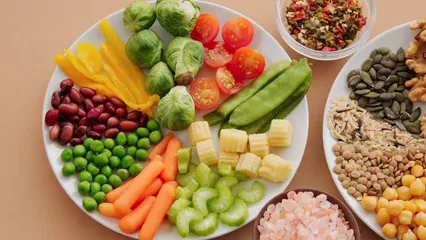
Healthy Homemade Dog Food Recipes
Now that we’ve established why homemade dog food is a great choice for your senior pup, let’s get those aprons on! Here are three delicious and nutritious recipes that will have your furry friend wagging their tail in delight.
Recipe 1: Beef and Vegetable Stew
– Ingredients:
- 2 pounds of ground beef (lean)
- 1 cup carrots, diced
- 1 cup green beans, chopped
- 1 cup peas (frozen or fresh)
- 1 apple, cored and chopped (no seeds)
- 1 cup butternut squash, diced
- 4 cups low-sodium beef broth
- 1 tablespoon olive oil
– Directions:
- In a large pot, heat olive oil over medium heat.
- Add ground beef and cook until browned. Drain excess fat.
- Add carrots, green beans, peas, butternut squash, and apple to the pot.
- Pour in the beef broth and stir well.
- Bring the mixture to a boil, then reduce heat and simmer for 30 minutes.
- Allow to cool before serving. Store leftovers in the fridge for up to five days or freeze for later.
– Nutritional Benefits:
- Ground Beef: Packed with protein, essential for muscle maintenance.
- Carrots: High in beta-carotene for vision health.
- Green Beans: Low in calories, aiding weight management.
- Peas: Provide fiber, supporting digestive health.
- Apple: A tasty treat loaded with vitamins A and C.
- Butternut Squash: Rich in fiber, promoting healthy digestion.
- Beef Broth: Hydrating and flavorful, enhancing the meal’s palatability.

Recipe 2: Chicken and Rice Medley
– Ingredients:
- 2 cups brown rice (cooked)
- 2 pounds chicken breast (boneless, skinless)
- 1 cup spinach, chopped
- 1 cup carrots, shredded
- 1/2 cup peas (frozen or fresh)
- 1 tablespoon olive oil
– Directions:
- In a skillet, heat olive oil over medium heat.
- Cook chicken breast until fully cooked, about 15 minutes. Let it cool, then chop or shred.
- In a large bowl, combine cooked rice, chopped chicken, spinach, carrots, and peas.
- Mix well until all ingredients are combined.
- Serve warm or cool, and refrigerate leftovers for up to five days.
– Nutritional Benefits:
- Brown Rice: Excellent source of carbohydrates and fiber.
- Chicken Breast: Lean protein source, crucial for maintaining muscle mass.
- Spinach: Packed with vitamins A, C, and K; great for overall health.
- Carrots: Rich in carotenoids for eye health and immune function.
- Peas: Provide protein and help support a healthy weight.

Recipe 3: Salmon and Sweet Potato Bowl
– Ingredients:
- 2 cans (15 ounces each) of salmon (skinless, boneless)
- 1 large sweet potato, peeled and diced
- 1 cup spinach, chopped
- 1/2 cup carrots, grated
- 1 tablespoon olive oil
– Directions:
- Preheat the oven to 400°F (200°C).
- Place the diced sweet potato on a baking sheet and drizzle with olive oil.
- Bake for 25 minutes, or until soft.
- In a bowl, combine canned salmon (drained), chopped spinach, grated carrots, and baked sweet potatoes.
- Mix thoroughly and serve warm. Store leftovers in the fridge for up to five days.
– Nutritional Benefits:
- Salmon: Rich in omega-3 fatty acids, promoting healthy skin and coat.
- Sweet Potato: High in fiber and vitamins, supporting digestive health.
- Spinach: A nutrient powerhouse that boosts overall health.
- Carrots: Excellent for eye health and immune support.

These recipes are not only easy to prepare but also packed with nutrients that aging dogs need. By whipping up these meals, you’re providing your furry companion with delicious and healthy options that support their vitality and well-being. Happy cooking!
Recipe 4: Turkey and Quinoa Delight
– Ingredients:
- 1 pound ground turkey
- 1 cup quinoa (rinsed)
- 1 cup carrots, diced
- 1 cup spinach, chopped
- 1/2 cup peas (frozen or fresh)
- 2 cups low-sodium chicken broth
- 1 tablespoon olive oil
– Directions:
- In a large pot, heat olive oil over medium heat.
- Add ground turkey and cook until browned.
- Stir in diced carrots and quinoa. Mix well.
- Pour in chicken broth and bring to a boil.
- Reduce heat to low and cover. Simmer for 20 minutes.
- Add spinach and peas. Cook for an additional 5 minutes.
- Allow to cool before serving. Store leftovers in the fridge for up to five days.
– Nutritional Benefits:
- Ground turkey is an excellent source of lean protein. It helps maintain muscle mass and is easy on senior dogs’ digestive systems.
- Quinoa is a fantastic source of fiber, promoting healthy digestion and keeping your dog feeling full. This delightful combo supports overall health while keeping mealtime exciting!
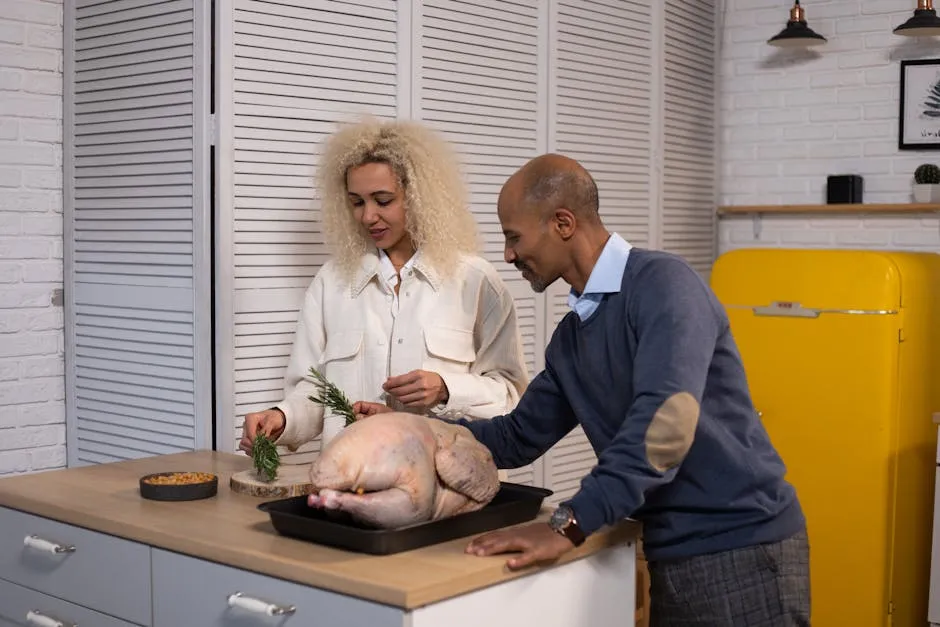
Recipe 5: Lamb and Brown Rice Meal
– Ingredients:
- 1 pound ground lamb
- 1 cup brown rice (cooked)
- 1 cup carrots, shredded
- 1 cup green beans, chopped
- 1/2 cup pumpkin puree (not pie filling)
- 1 tablespoon olive oil
– Directions:
- In a skillet, heat olive oil over medium heat.
- Add ground lamb and cook until browned, about 10 minutes.
- Stir in shredded carrots, green beans, and pumpkin puree.
- Cook for another 5-7 minutes until vegetables are tender.
- Mix in the cooked brown rice and stir until well combined.
- Allow to cool before serving. Refrigerate for up to five days.
– Nutritional Benefits:
- Lamb is a great protein choice, especially for dogs with food allergies. It’s often easier to digest and less likely to cause sensitivities.
- Brown rice, on the other hand, is a digestible carbohydrate. It provides energy without upsetting your dog’s stomach. This meal is perfect for keeping your senior dog happy and healthy!
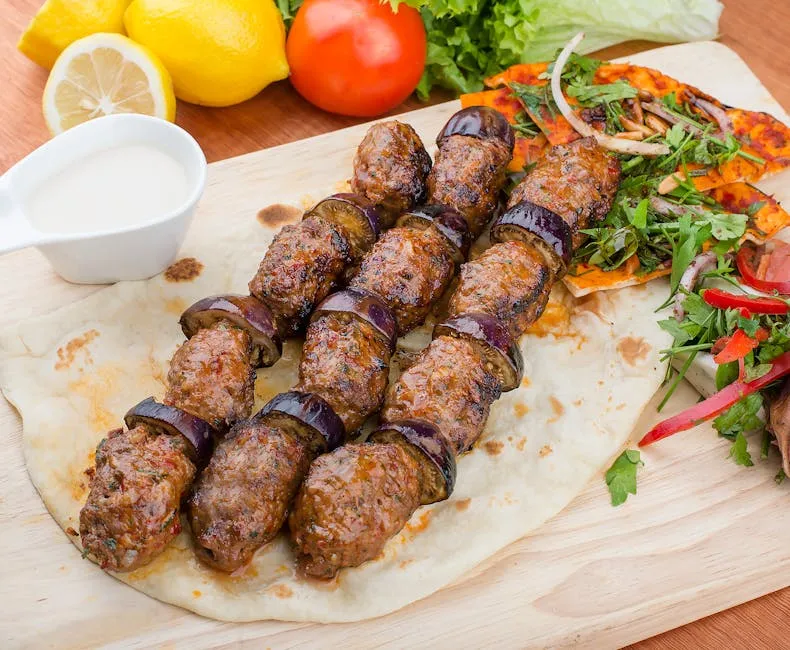
Tips for Transitioning to Homemade Dog Food
Gradual Transition
Switching your senior dog to homemade food? Take it slow! Gradually introduce new meals over one to two weeks. Start by mixing a small amount of homemade food with their usual kibble. Increase the ratio of homemade food gradually while decreasing the kibble. This helps avoid digestive upset.
Watch for any adverse reactions. Keep an eye on your dog’s stool and overall behavior. If you notice any changes, it might be wise to slow down or consult your veterinarian. Every dog is unique! Adjust the transition process based on your dog’s specific needs and sensitivities.
Remember that patience is key. Your senior dog may need time to adjust to new flavors and textures. Stay curious and try different combinations until you find what your furry friend loves!
Also, consider their hydration. Homemade meals might be drier than kibble, so ensure fresh water is always available. A smooth transition means a happier, healthier pup!

Storage and Preparation
When it comes to homemade dog food, proper storage and preparation are key. First, always use fresh ingredients. This ensures your senior dog gets the best nutrition possible. After cooking, let the meals cool before storing. Hot food can raise the temperature in your fridge, which isn’t ideal for food safety.
For storage, use dog food storage containers. This helps preserve freshness and prevents any unwanted odors in your fridge. Homemade dog food can last about five days in the refrigerator. If you whip up a big batch, consider freezing portions. Just make sure to label the containers with dates. Frozen meals can last for up to three months. When you’re ready to serve, thaw in the fridge overnight.
Preparing meals in batches saves time. You can spend a few hours on the weekend cooking several recipes. Simply divide the food into daily portions. This way, you’ll always have nutritious meals ready to go. Plus, your dog will appreciate the variety!
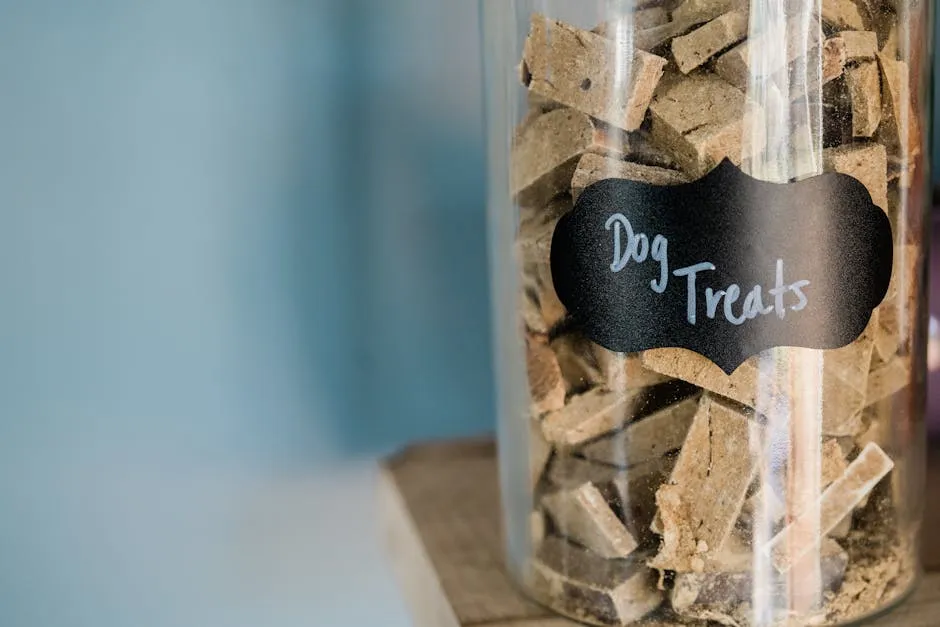
Conclusion
Homemade dog food is a fantastic option for senior dogs. It allows you to customize meals that cater to their specific health needs. With the right ingredients, you can help manage common issues like weight gain, arthritis, and digestive problems.
Remember, every dog is unique. Take the time to understand your furry friend’s dietary requirements. By doing so, you’ll create meals that not only nourish but also excite their taste buds.
So why not try one of the tasty recipes shared here? Your senior dog deserves delicious and healthy food. Share your experiences with us! We’d love to hear how your pup enjoys their new meals and any adjustments you’ve made along the way.
FAQs
What ingredients should I avoid in homemade dog food?
Not all human foods are safe for dogs. Avoid harmful ingredients like onions and garlic. These can lead to serious health problems. Certain spices can upset your dog’s stomach too. Always do your research before adding anything new to their diet.
Can I use leftovers from my meals to make dog food?
Using leftovers can be a great idea, but with a catch! Ensure that no harmful ingredients are present. For instance, avoid foods seasoned with onion or garlic. If you’re unsure, it’s always best to stick with fresh ingredients specifically meant for your dog.
How much homemade dog food should I feed my senior dog?
The amount of food depends on your dog’s size and health status. A general guideline is to feed 2% to 3% of their body weight daily. For a 50-pound dog, that’s roughly 1 to 1.5 cups of food per meal. Adjust based on your dog’s activity level and weight changes.
Is homemade dog food nutritionally complete?
Homemade meals can be nutritious, but balancing the diet is crucial. Consult a veterinarian or a pet nutritionist to ensure your dog gets all essential nutrients. They can help you formulate a balanced diet that meets your dog’s specific needs.
How can I ensure my senior dog enjoys their new diet?
Transitioning to homemade food should be gradual. Start by mixing a small portion of new food with their current kibble. This helps them adjust to new flavors and textures. Additionally, try incorporating different ingredients to keep meals exciting! Your dog will appreciate the variety.
Please let us know what you think about our content by leaving a comment down below!
Thank you for reading till here 🙂
All images from Pexels





